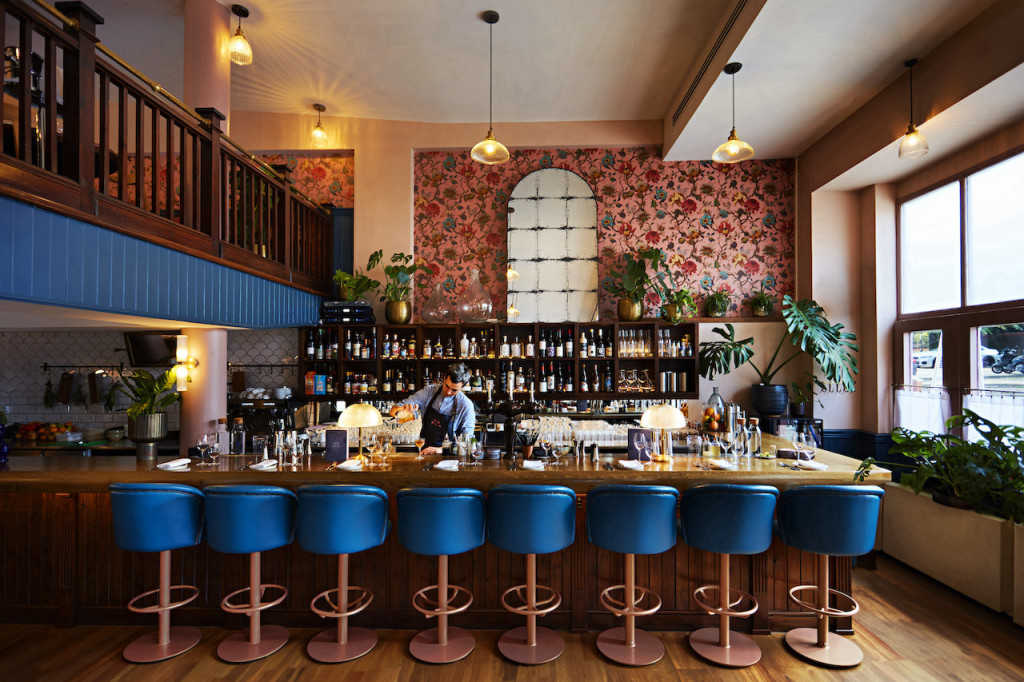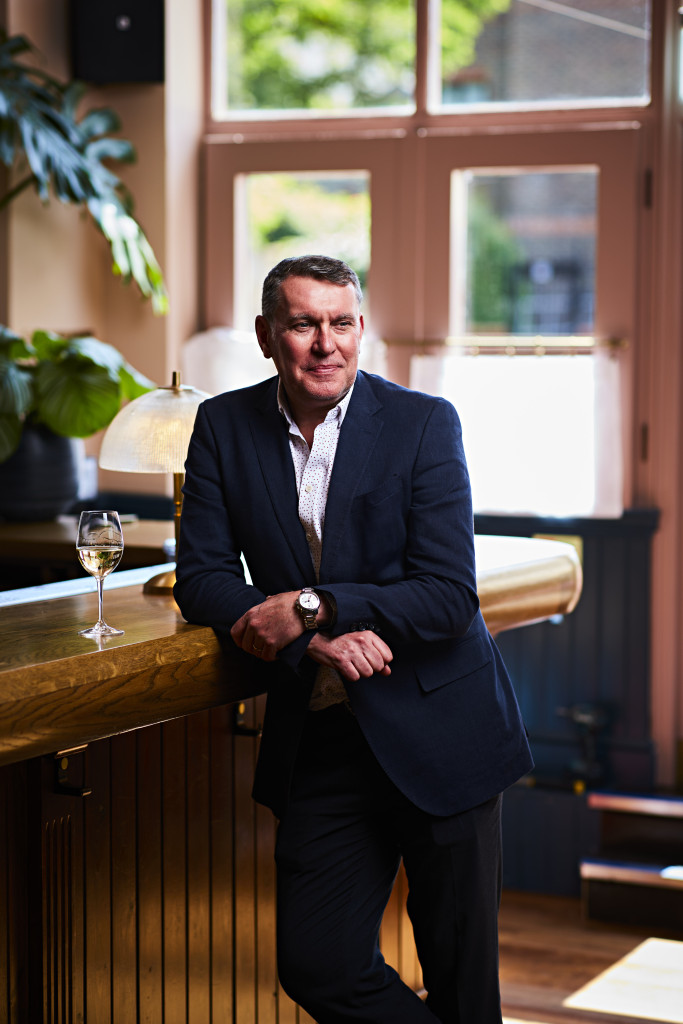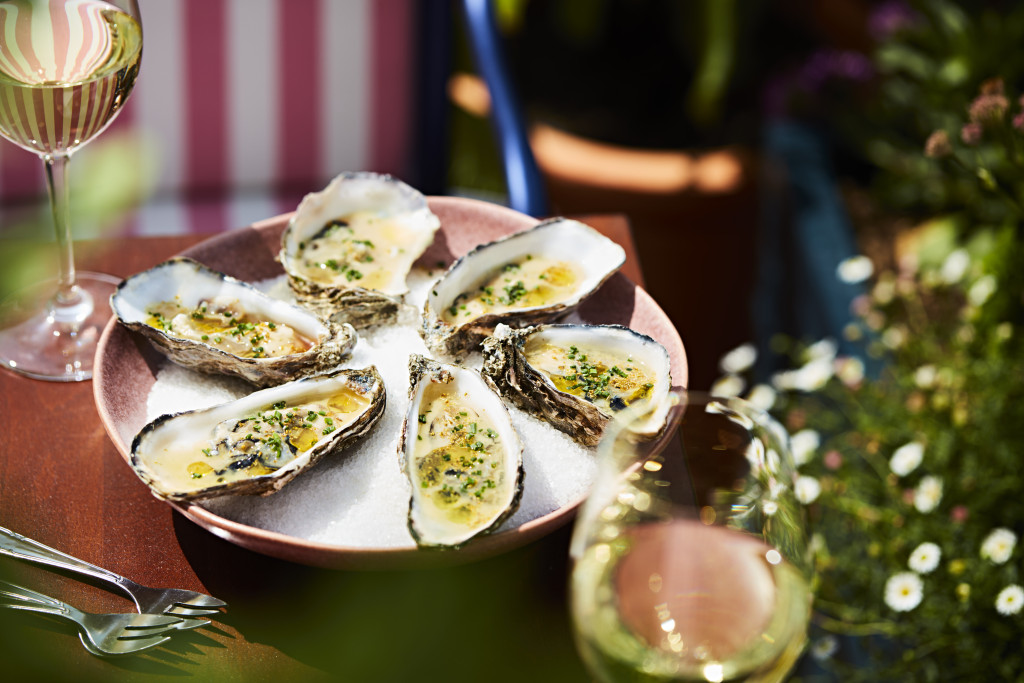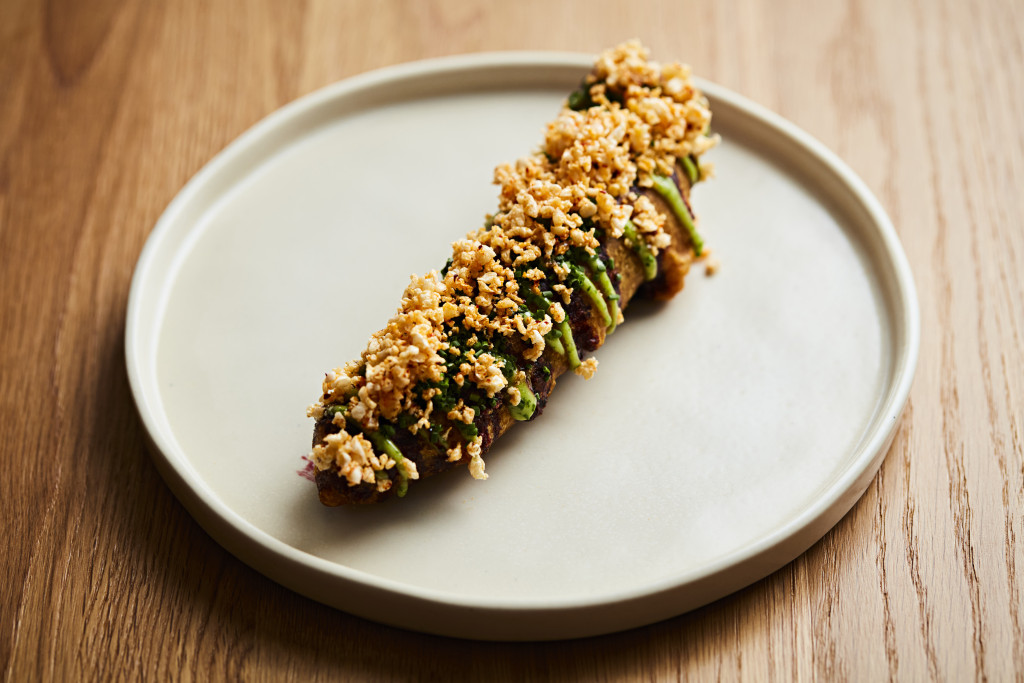In July 2024, The debut neighbourhood restaurant from David O’Brien, former Development Director at Caprice Holdings, opened its doors in Greenwich.
Head Chef Fionnan Flood (featured on the 2023 and 2024 Murphia list) has created a menu which uses seasonal, fresh produce, showcasing the diverse bounty of the British Isles.
The restaurant has quickly become a favourite for locals and travellers alike, renowned for its moreish and playful dishes, such as the Maris Piper potato, leek and keens cheddar pie, potato crisps with leek dip and the ever-addictive cheese puffs.
Highroad Social is open from Tuesday to Sunday, offering a welcoming atmosphere for casual lunches, afternoon snacks, cosy dinners, and relaxed weekend outings.
Its inventive cocktail list, inviting terrace and beautiful bar, where raw seafood and oysters can be enjoyed, make it the perfect destination, whatever the weather.
What was the vision behind the creation of Highroad Social?
The goal was to create a stylish bar and eatery in a charming neighbourhood, establishing a model that could fit into any village or small town across London and the UK. I envisioned a Georgian townhouse with tropical accents, blending eclectic elements with exceptional ingredients served in a playful way. My vision was to combine classic elegance with a hint of the exotic.
Why do you think Greenwich is the perfect location for the restaurant?
Greenwich is a major historical destination, yet it lacks a variety of great eateries. Given its prime location by the river and its rich nautical history, I saw an opportunity to create a destination bistro that would complement the area’s unique charm.
What role does the local Greenwich community play in shaping the restaurant’s identity?
Greenwich, which is known for its cultural sights, also has a very strong local community. I believe that Highroad Social is the perfect middle ground which serves as an ideal meeting point between visitors and locals. However, we will always prioritize feedback from residents on everything we do.
I also want to collaborate closely with the community by working with local suppliers, such as Greenwich Gin which we use in our cocktails and Paul Rhodes bakery who supplies our bread, to create a strong local footprint.
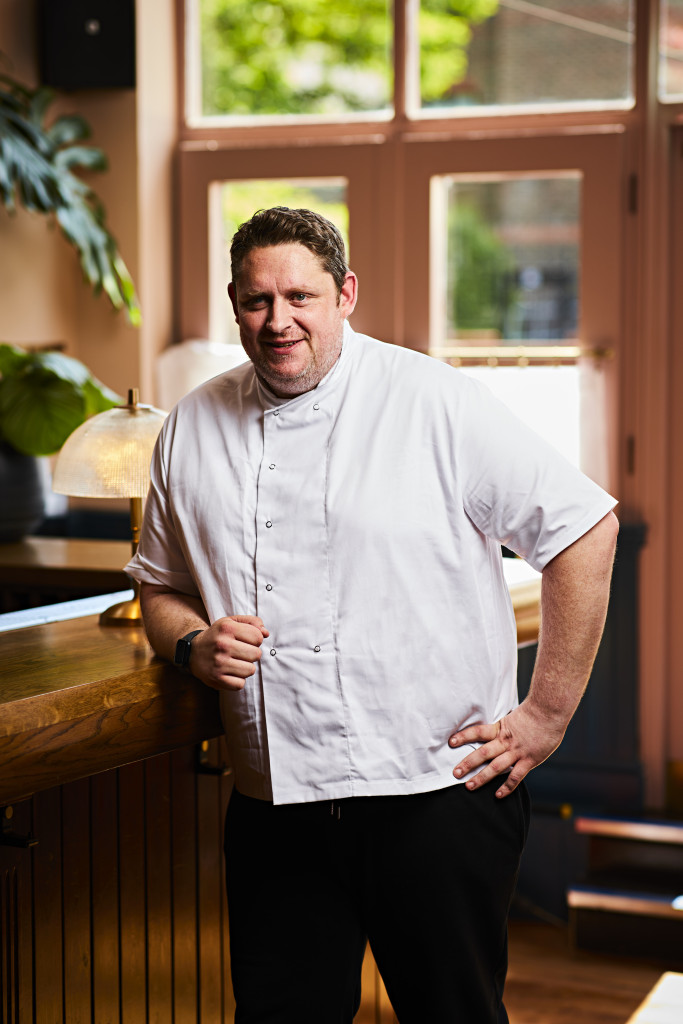
Can you tell us about the inspiration behind some of the most popular dishes at Highroad Social and how do you both collaborate to blend your culinary and hospitality expertise?
David: Fionnan shares my philosophy of simplicity, seasonality, and using exceptional quality ingredients.
My brief to him was to create a beautiful sharing menu that could be enjoyed all-day, from snacks and cocktails to seasonal small and large plates for sharing. We started with no more than two main ingredients in each section and refined them to suit the menu, the seasons and to match our unique DNA. This is reflected in dishes like the oyster selection, the battered Londoner sausage, and especially the raw bar.
Fionnan really shines when he adds technique and creativity, bringing a playful touch to each dish. We collaborate closely, discussing and refining each dish before moving forward, always staying true to simple ingredients and letting them speak for themselves.
For example, our Soused Mackerel with Pickled Vegetables and Sour Carrot Sauce pays tribute to the main ingredient—keeping it simple yet playfully presented. Fionnan also honours both our heritage with dishes like the Braised Feather Blade of Beef with Lovage Champ and Roscoff Onion, where British beef meets Irish-style mash.
How did you both meet?
David: I had committed to the site and knew exactly what I wanted to create, but I needed a Chef who could bring that vision to life. I began searching for someone with the right background—someone from top restaurants where the focus is on letting the ingredients shine. Fionnan’s CV came to me through a trusted colleague in the industry, and after meeting several candidates, I met him at a well-known restaurant. We discussed food and our shared philosophy, and it was clear he was the right person to lead the menu. We immediately clicked over our passion for food.
Can you tell us about some of your favourite dishes on the Highroad Social menu?
Fionnan: Our signature dish that will stay on the menu year-round is the Battered Londoner Sausage. It’s made from simple ingredients but elevated into something special. It reminds me of something Alastair Little or Gary Rhodes might have created, especially when paired with Carlingford Oysters, in Alastair’s case. Having said that, I’m really proud that we’ve developed our own unique style of dishes.
What experience do you want customers to take away when dining at Highroad Social?
Our goal is for guests to feel a warm welcome from the moment they arrive, knowing that they’re in good hands with both the menu and the service. We want them to leave with the sense that they’ve just enjoyed dinner with an old friend —happy and satisfied.
David, After years working abroad, how has returning to London influenced your approach at Highroad Social?
I’ve always loved modern British food abroad, but local cooking and ingredients from places like France, Europe, America, and the Middle/Far East had a huge influence on my journey. I always planned to return home and get involved in the London food scene again.
Since returning to the UK six years ago, I had been on the lookout for the right location to start the next chapter of my career. I cycled past what is now Highroad Social—then Rivington Grill, a restaurant I knew well from opening several internationally. It was the first day of lockdown, and while on my daily bike ride, I noticed the restaurant was closed, looking tired and run down. That moment planted the seed, inspiring me to get the place back on its feet, which has taken all my experience to achieve.
Fionnan, how did your grandmother’s cooking in County Wicklow influence your focus on local ingredients?
My grandmother taught me to respect simple ingredients and inspired my love for cooking. This experience sparked my desire to work with both young and established chefs. Moving to London felt like the best way to follow my passion after being guided by such a wonderful mentor.
Fionnan, What has been the most rewarding part of leading the kitchen at Highroad Social so far?
I was given the opportunity to create a lovely menu and the ethos behind it. We are a team of seven, including familiar faces I’ve worked with before. I hired them because I trust them, and together we function as a real team. My sous chef, Joao, is Portuguese and brings a strong focus on sharing plates. While this isn’t my first head chef position, it’s the first time I share the same vision as the owner.
Outside of work, how do both of your hobbies, like gardening and fishing, influence your creative process in the restaurant?
Fionnan: Outside of work, I love dining out in restaurants for market research. I’m very passionate about the restaurant industry and enjoy seeing what other chefs are doing. A restaurant I always enjoy going to is Brunswick House.
David: I enjoy cycling through France and Spain while combining it with culinary pit stops. In Champagne, I often call winemakers and share meals with them. In Bordeaux, I love to eat oysters. I also picked up a taste for beef tartare on toast from my travels in France, which is a lovely dish we now have on the menu. Locality and seasonality are important lessons I learned while exploring Europe.
What are the future plans for the restaurant – any expansion, projects, guest dishes etc?
We’ve just opened in July, so our current focus is on building and satisfying our clientele. We want to take the time to get to know our regulars personally and understand their preferences. Our aim is to create memorable experiences that keep them coming back. Once we feel we’ve accomplished this, we’ll be ready to explore our next steps.
If you could try dishes from any period of history, where (and when?) would you travel back to and why?
David: I wouldn’t point to a specific dish, but I would have loved to experience the spice route during the 17th or 18th century. The thrill of discovering new ingredients would have been incredibly exciting. Tasting spices like pepper, ginger, cloves, nutmeg, mace, cinnamon, saffron, anise, zedoary, cumin, and more for the first time surely sparked creativity among chefs back then. This era played a crucial role in shaping early modern European cuisine, making it a truly exciting time for food culture.
